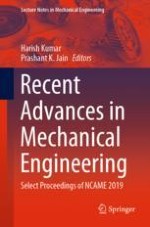2020 | OriginalPaper | Buchkapitel
Experimental Investigation of Microstructure and Mechanical Properties of Brass–Iron Joined by TIG Welding Process
verfasst von : J. Nithin Kumar, M. Devaiah, P. Sandeep kumar, P. Sudheer Rao
Erschienen in: Recent Advances in Mechanical Engineering
Verlag: Springer Singapore
Aktivieren Sie unsere intelligente Suche, um passende Fachinhalte oder Patente zu finden.
Wählen Sie Textabschnitte aus um mit Künstlicher Intelligenz passenden Patente zu finden. powered by
Markieren Sie Textabschnitte, um KI-gestützt weitere passende Inhalte zu finden. powered by
